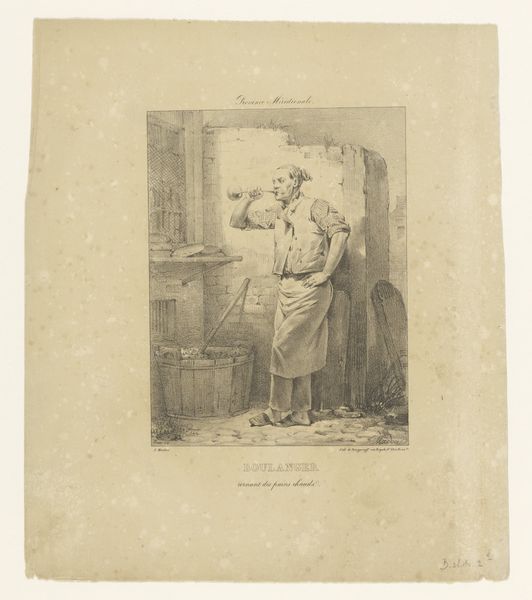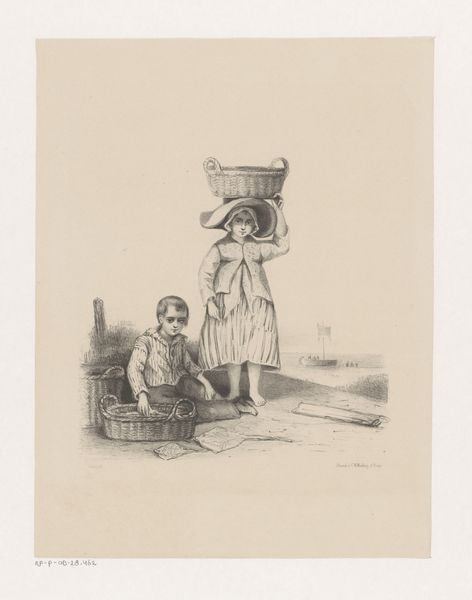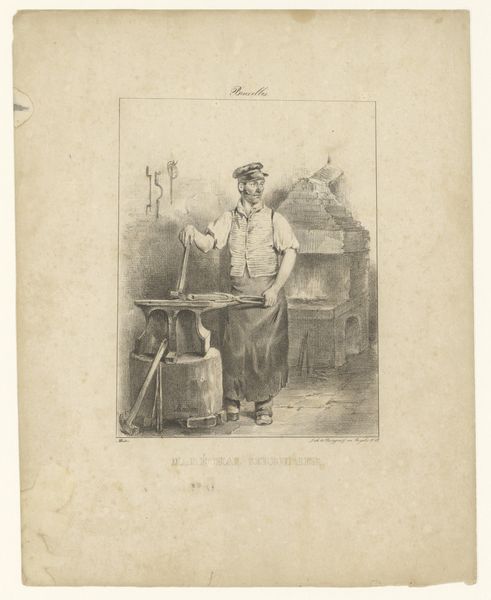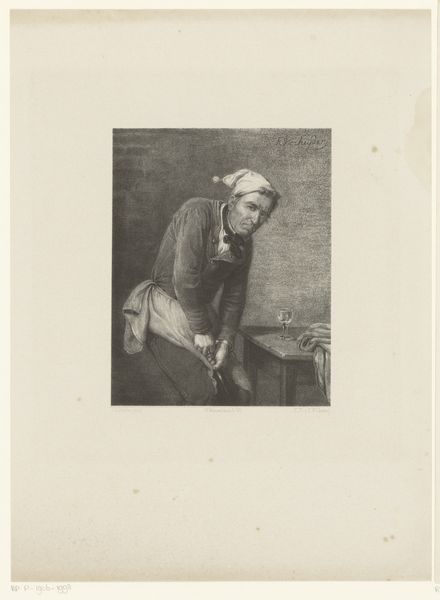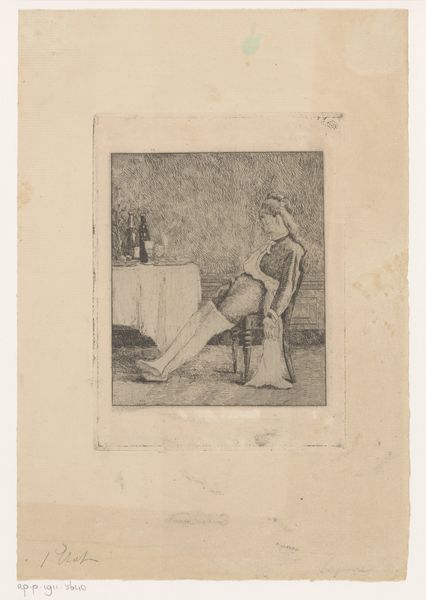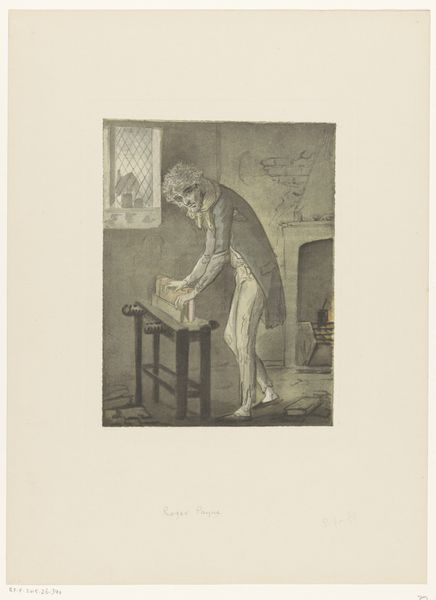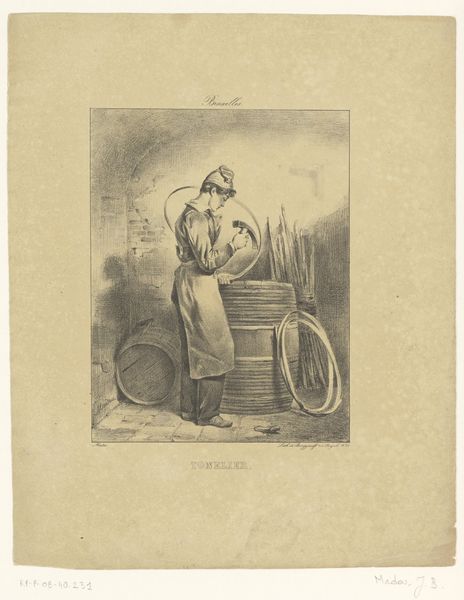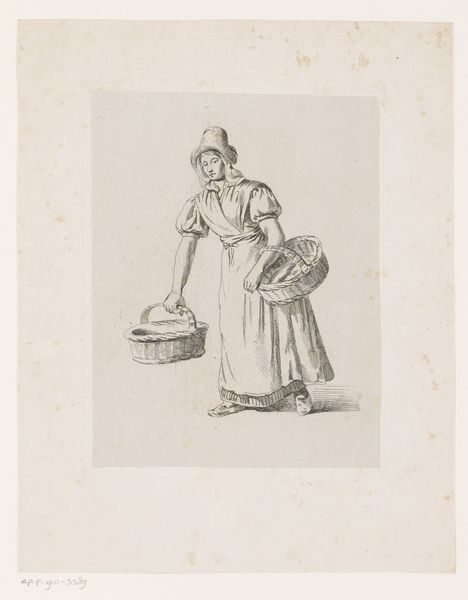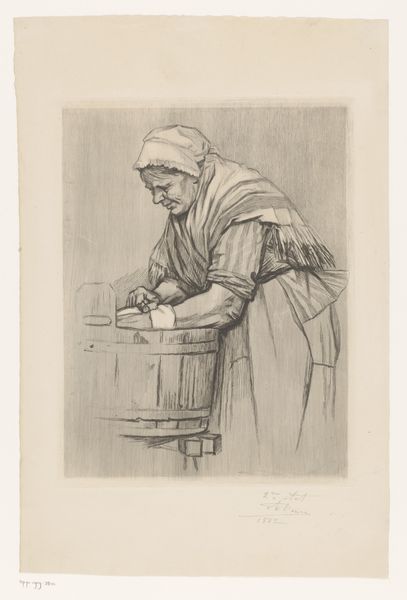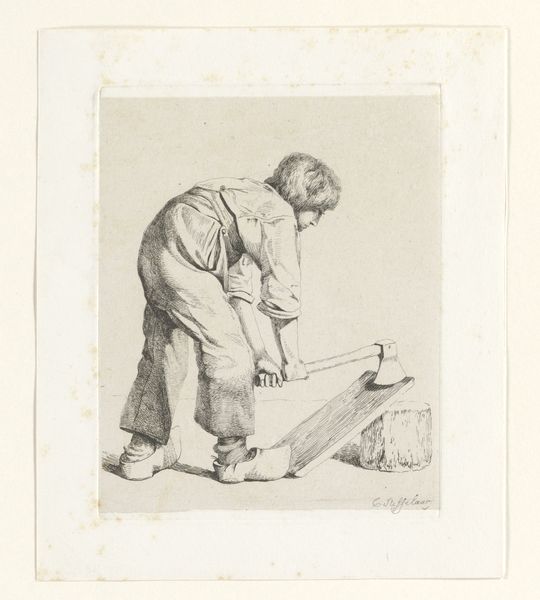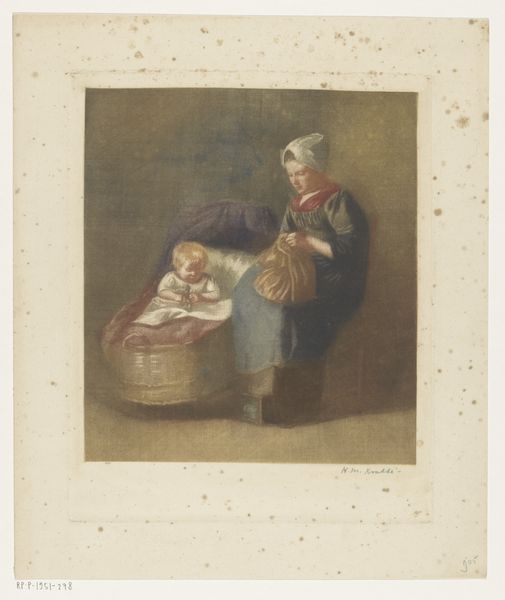
drawing, print, etching, paper
#
portrait
#
drawing
# print
#
etching
#
paper
#
genre-painting
#
realism
Dimensions: height 239 mm, width 158 mm
Copyright: Rijks Museum: Open Domain
Curator: This etching, crafted in 1864 by Théodule Ribot, is entitled "Dark Interior with Man Cleaning a Pan". Editor: My first impression is somber. The darkness almost feels weighted. The figure is cloaked in this thick atmosphere; labor made intimate by shadow. Curator: Indeed. Ribot often depicted ordinary people engaged in everyday activities. This falls into the genre painting tradition, showcasing a slice of working-class life. It encourages us to examine the social realities of 19th-century France, but perhaps more personally, as labor in itself can be examined irrespective of its precise time. Editor: Absolutely. I wonder about the choice to obscure nearly everything in shadow. We might consider how visibility and invisibility functioned during that period—who was seen and whose labor remained unseen, performed literally behind the scenes of grander historical narratives? Curator: A very poignant observation. And, look closely at the man’s posture. His bowed head, the downward gaze. Ribot’s naturalistic style aimed to portray his subjects without idealization. It is crucial to note his realism in the portrayal of his subject and the surroundings. The weight of labour. Editor: It feels intensely personal too. It's a mundane task, but made significant, and it gives a dignity to his effort. Does Ribot want to acknowledge the lives we may deem ordinary? Can it perhaps offer a counter-narrative to prevalent notions of power and privilege at the time? Is he uplifting the proletarian experience? Curator: That reading aligns perfectly with broader socio-political discourse emerging in the late 19th century. It also mirrors discussions within Realist artistic circles— the elevation of common life into artistic subject matter. He shows no artifice; just honest representation, devoid of romanticism. The materiality of the scene — the pan, the simple trunk – speaks volumes. Editor: In closing, perhaps Ribot challenges us to recognize the artistry within labor itself, revealing profound dignity amidst the humblest circumstances, allowing the worker visibility beyond merely their labor. Curator: It compels us to question our own preconceptions about what constitutes worthy subject matter for art, reminding us that beauty and meaning can be found in the most unexpected corners of existence.
Comments
No comments
Be the first to comment and join the conversation on the ultimate creative platform.
